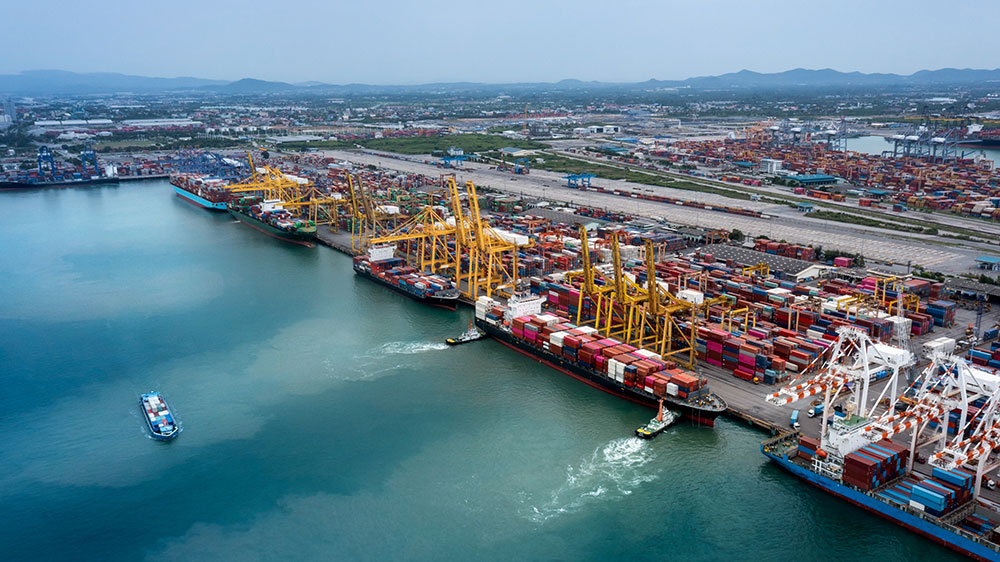
Introduction
China and Malaysia have long maintained strong trade relations, with sea freight serving as the backbone of this partnership. As one of the most cost-effective and reliable shipping methods, ocean freight is the preferred choice for large and heavy cargo.
Importers choosing sea freight must decide between FCL (volle Containerladung) und LCL (Less than Container Load). Understanding the differences, advantages, and costs of these two options is key to optimizing logistics and avoiding unnecessary expenses.
Why Choose Sea Freight?
- Economical for Bulk Cargo: Sea freight offers lower per-unit costs compared to Luftfracht.
- High Capacity: A single container can carry up to 30 tons, suitable for heavy machinery, raw materials, or large retail orders.
- Reliable Schedules: Regular sailings from China to Malaysia ensure stable supply chains.
- Sustainability: Sea freight produces fewer emissions per kg compared to air transport.
Major Shipping Routes and Ports
- Origin Ports in China: Shanghai, Ningbo, Shenzhen, Guangzhou, Qingdao, Tianjin.
- Destination Ports in Malaysia:
- Port Klang (Kelang): Malaysia’s busiest port near Kuala Lumpur.
- Penang Port: Key hub for northern Malaysia.
- Johor Port & Tanjung Pelepas: Serving southern Malaysia, near Singapore.
- Kuching, Kota Kinabalu: Serving East Malaysia.
Transit Time: Typically 10–18 days, depending on origin and destination ports.
What is FCL (Full Container Load)?
FCL shipping means renting an entire container, even if it’s not fully loaded.
Advantages:
- Exclusive use of the container ensures higher security.
- Faster handling at ports (no need for consolidation/deconsolidation).
- Lower cost per unit if cargo volume is large enough.
- Ideal for fragile, high-value, or bulk shipments.
Container Types & Capacities:
- 20ft Container: 28–30 CBM, max 25–28 tons.
- 40ft Container: 55–60 CBM, max 26–28 tons.
- 40ft High Cube: 65–68 CBM, for larger-volume cargo.
What is LCL (Less than Container Load)?
LCL shipping means sharing a container with cargo from other shippers. Charges are based on cubic meters (CBM).
Advantages:
- Cost-effective for small shipments (1–15 CBM).
- Flexible—no need to wait until you can fill a container.
- Good for testing new markets with limited orders.
Challenges:
- Slower handling due to consolidation and deconsolidation.
- Higher risk of damage from mixed cargo.
- Customs delays may affect all shipments in the container.
Cost Comparison: FCL vs LCL
| Merkmal | FCL (volle Containerladung) | LCL (Less than Container Load) |
|---|---|---|
| Cost Basis | Fixed rate per container | Per CBM rate (US$30–60/CBM) |
| Am besten für | >15 CBM or heavy cargo | <15 CBM, small shipments |
| Transitzeit | Faster, direct handling | Slower, requires consolidation |
| Security | Higher (exclusive use) | Lower (shared with others) |
| Flexibilität | Less flexible | Highly flexible |
Customs Clearance in Malaysia
All sea freight shipments must go through Malaysian customs.
- Required Documents:
- Handelsrechnung
- Packliste
- Konnossement
- Certificate of Origin (if applicable)
- Import Duties & Taxes: Based on HS code classification; SST applies to certain products.
- DDP Option: Choosing Delivered Duty Paid allows the forwarder to prepay duties and taxes, ensuring hassle-free delivery.
Best Practices for Importers
- Wählen Sie den richtigen Modus: If your shipment is near 15 CBM, FCL is usually cheaper than LCL.
- Plan Ahead: Book shipments in advance, especially before peak seasons like Chinese New Year.
- Optimize Packaging: Use space efficiently to minimize CBM charges in LCL.
- Work with Trusted Forwarders: Ensure compliance with customs and reduce the risk of delays.
- Consider Von Tür zu Tür Services: Simplify logistics with all-in-one solutions covering customs clearance and last-mile delivery.
Case Example
A Malaysian importer of home furniture used to ship 10 CBM per order via LCL, paying high per-CBM rates. After consolidating orders and switching to a 20ft FCL shipment once a month, the importer cut logistics costs by 25% and reduced handling delays.
Schlussfolgerung
Sea freight remains the most cost-effective and scalable option for transporting goods from China to Malaysia. The choice between FCL and LCL depends on shipment size, budget, and urgency. FCL offers better security and lower per-unit costs for larger shipments, while LCL provides flexibility and affordability for smaller loads.
By partnering with an experienced freight forwarder, businesses can navigate customs regulations, reduce costs, and ensure smooth logistics operations between China and Malaysia.


Thank you for reading!
Have questions, corrections, or better ideas? We’d love to hear from you!
We value every piece of feedback and promise to reply within 24 hours. Let's make this guide better together!
Note: Spam comments will not be published.